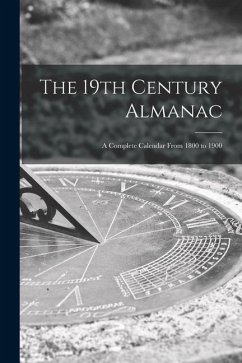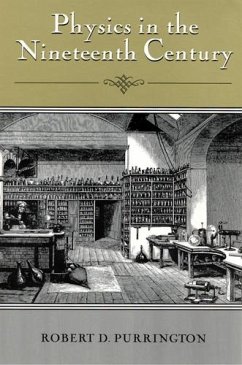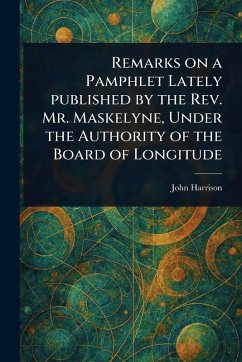
Development of Gravity Pendulums in the 19th Century
Versandkostenfrei!
Versandfertig in über 4 Wochen
15,99 €
inkl. MwSt.

PAYBACK Punkte
8 °P sammeln!
Explore the fascinating history and science of timekeeping with "Development of Gravity Pendulums in the 19th Century," a detailed exploration of the pendulum's evolution as a precision instrument. Authored by Victor Fritz Lenzen and Robert P. Multhauf, this meticulously researched work, originally published by the Smithsonian Institution, delves into the physics behind the gravity pendulum and its crucial role in 19th-century measurement. Part of the Museum of History and Technology's Papers on Science and Technology, this volume offers invaluable insights into the pendulum's development and ...
Explore the fascinating history and science of timekeeping with "Development of Gravity Pendulums in the 19th Century," a detailed exploration of the pendulum's evolution as a precision instrument. Authored by Victor Fritz Lenzen and Robert P. Multhauf, this meticulously researched work, originally published by the Smithsonian Institution, delves into the physics behind the gravity pendulum and its crucial role in 19th-century measurement. Part of the Museum of History and Technology's Papers on Science and Technology, this volume offers invaluable insights into the pendulum's development and application. Discover the intricacies of pendulum history, examining its impact on scientific advancement and technological innovation. Perfect for those interested in physics, the history of science, and the evolution of timekeeping, this book provides a comprehensive look at a pivotal technology of the 19th century. This work has been selected by scholars as being culturally important, and is part of the knowledge base of civilization as we know it. This work is in the public domain in the United States of America, and possibly other nations. Within the United States, you may freely copy and distribute this work, as no entity (individual or corporate) has a copyright on the body of the work. Scholars believe, and we concur, that this work is important enough to be preserved, reproduced, and made generally available to the public. We appreciate your support of the preservation process, and thank you for being an important part of keeping this knowledge alive and relevant.






![The Why of Gravity [microform] /by J.A. Allen Cover The Why of Gravity [microform] /by J.A. Allen](https://bilder.buecher.de/produkte/66/66192/66192177n.jpg)







